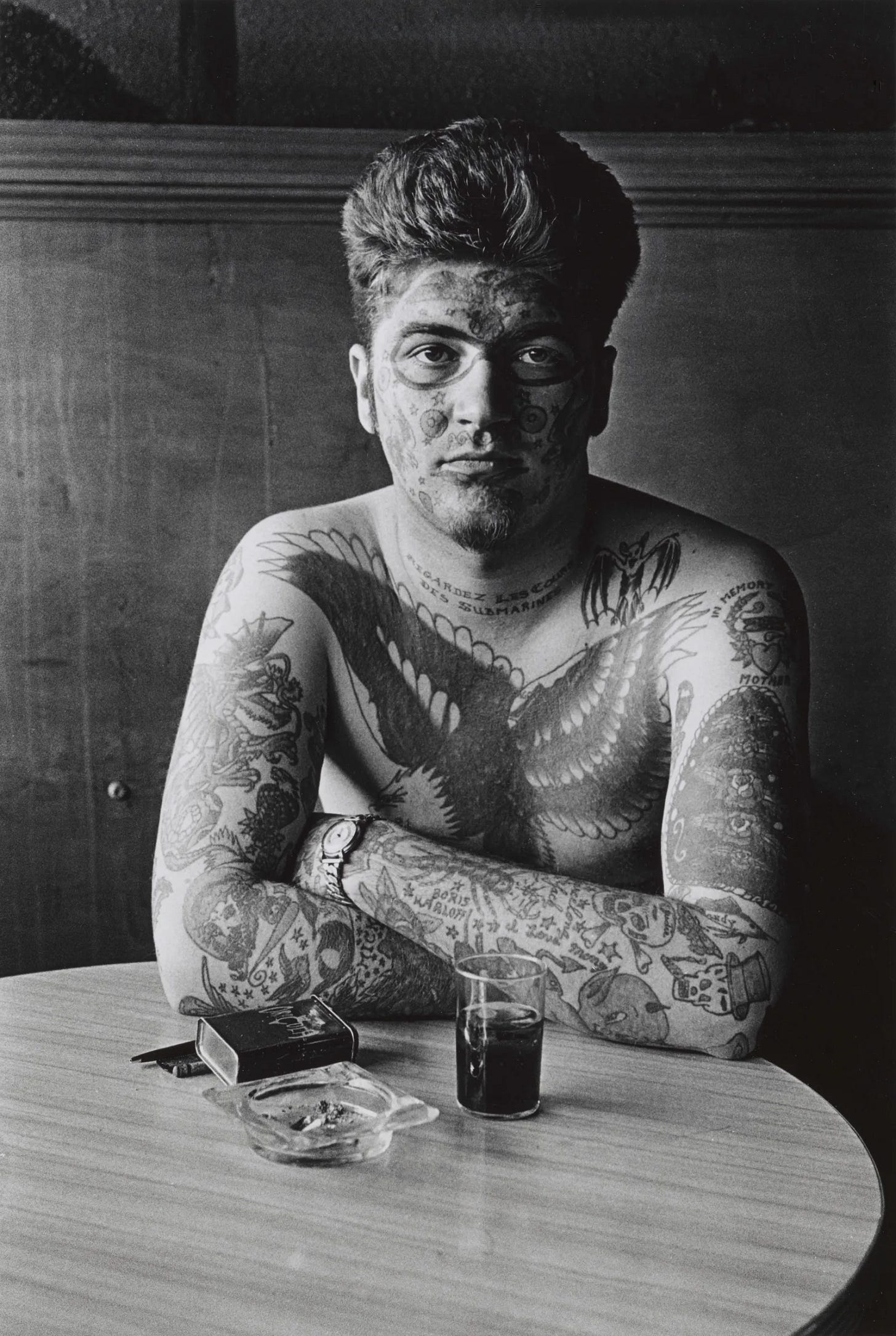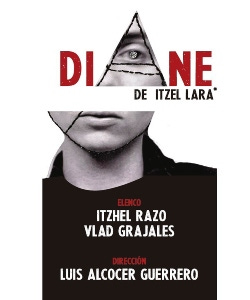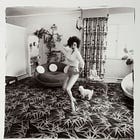The Most Interesting Work I Found Inspired By Diane Arbus
Playwright Itzel Lara explores the artist's pain without buying into the trope of artists having to suffer for their creativity
This is how art and health intersect for a famous artist. If you are interested in understanding this relationship in your own life: Order a Creative Health Assessment or Book a 1:1 Coaching Call.
Recently, I shared with you some excerpts from people who had written about Diane Arbus’s work. Doing that research, I also came across quite a few other artists whose work has been inspired by Arbus. For example, I shared an excerpt related to disability studies from Kristin Lindgren; her full piece also looked at “contemporary photographer Laura Swanson, who positions her work in relation to that of Arbus.”
Obviously, many photographers have been influenced by her work over time. However, the most interesting piece I came across is actually a play, or rather, what appears to be a trilogy of plays, by Mexican playwright and screenwriter Itzel Lara. Her work and most writing about it is in Spanish, so I’ve combined my not-fluent Spanish language skills with some translation tools what is available in English online to understand her work.
Writing That Captures My Eye
Before we move into that, though, I wanted to share my favorite quote from this writer, which comes from an interview she did with Royal Court Theatre, in which she mentions the Arbus work but doesn’t cite the photographer’s influence by name.
“I like white butterflies and bitter chocolate. I firmly believe that the sea comforts the lungs and I am certain that if you could choose the architecture of your heart, mine would be a theater.”
Beyond The Tortured Artist Trope
As for the Arbus play (as far as I can tell, only the first one has been produced), I based most of what I’m sharing an English translation of what appears to be this Reforma piece. What stood out most for me was this:
“Quiero que vean a la artista a la que le duele la vida. Pero más allá de la pose de: 'Ay, soy artista y tengo que sufrir porque veo el mundo desde otra manera'. Un poco quitar la idea romántica de que está bien sufrir, y mostrar el dolor tal cual que tenía ella por ser una persona con muchísima sensibilidad y con mucha comprensión de cómo leer el mundo y a las personas.”
— — — — — — — — —
“I want you to see the artist whose life hurts. But beyond the pose of: 'Oh, I'm an artist and I have to suffer because I see the world from another way'. A little bit to remove the romantic idea that it's okay to suffer, and show the pain as she was because she was a person with a lot of sensitivity and with a lot of understanding of how to read the world and people.”
The work that I’m doing in this world is to research the nuances of the relationship between art and mental health so that we can move away from exactly these tropes of the suffering genius and get into the shades of gray about what that really means. So I appreciate the playwright’s goal not to shy away from the pain in Diane Arbus’s psyche but also not to center that in some idealized way.

Creativity in the Creative Process
I also find myself particularly intrigued by the playwright’s creative process in metabolizing Arbus’s work:
“Y es que Lara confiesa que no quiso escribir sobre la fotógrafa sino hasta que se sintió lista, más madura como dramaturga, teniendo que convertirse en collagista y tarotista con tal de aprender a leer el mundo de otra forma para finalmente atreverse a hacerlo.
"Hay una serie de collage y de ensamblajes que acompañan la obra, y un proceso creativo muy peculiar. Incluso trabajé con la poeta Nadia Escalante, que es astróloga también, y me sacó la carta astral de Diane Arbus, de quien conseguí hasta la necropsia.
"Es muy característico que Diane tenga una influencia muy poderosa de Sagitario, cuando Sagitario es el signo que dispara, que dispara el fuego que cae para renacer. Esa imagen se me hizo muy bonita", comparte la autora, para quien la figura de Arbus se volvió "como un hoyo negro que te jala. Te metes y llega un momento en el que estás tan adentro que empiezas a sentir esa depresión".— — — — — — — — —
“Lara confesses that she did not want to write about the photographer until she felt ready, more mature as a playwright, having to become a collagist and tarotist in order to learn to read the world differently and finally dare to do so.
"There is a series of collages and assemblages that accompany the play, and a very peculiar creative process. I even worked with the poet Nadia Escalante, who is also an astrologer, and she got me the astrological chart of Diane Arbus, whose necropsy I even got.
"It's very characteristic that Diane has a very powerful Sagittarius influence, when Sagittarius is the sign that fires, that fires the fire that falls to be reborn. That image became very beautiful to me," shares the author, for whom the figure of Arbus became "like a black hole that pulls you in. You get into it and there comes a moment when you are so deep inside that you begin to feel that depression".
One of the things that intrigues me most about creativity is how we are all drawing from the same huge well of inspiration but we take different things from it as needed and we process it through our own unique experience of the world and then we make something inspired by it and informed by it but that’s uniquely our own. I love when people follow their threads of interest, however disparate they may seem, and pull them all together when creating works of art.
One of the ways that I do this is also through collage. I pull images from magazines along with stickers, text, receipts, ephemera, and I put it all together in little collages that I make quite frequently. I never exactly know what they’re all about. I just know that the layering on of these things, and the layering of each collage atop another in an album, is part of my process of metabolizing all of the different things that I’m taking in through all of my senses.
Women and Creativity
Finally this:
“De la afinidad que sintió con la fotógrafa como una creadora en sus 40, Lara se propuso contar la vida de Arbus no tanto en cuanto a lo que hacía, sino cómo sentía; "cómo sentía la vida, cómo le atravesaba la vida, y cómo le atraviesa la vida a una mujer creadora de 40 y pico, con todo lo que eso implica", detalla.”
— — — — — — — — —
“From the affinity she felt with the photographer as a creator in her 40s, Lara set out to tell Arbus' life not so much in terms of what she did, but how she felt; "how she felt life, how life went through her, and how life goes through a creative woman in her 40s, with all that implies," she explains.”






